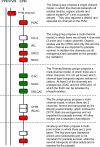Electrophysiological studies of malaria parasite-infected erythrocytes: current status
- PMID: 17292372
- PMCID: PMC2746352
- DOI: 10.1016/j.ijpara.2006.12.013
Electrophysiological studies of malaria parasite-infected erythrocytes: current status
Abstract
The altered permeability characteristics of erythrocytes infected with malaria parasites have been a source of interest for over 30 years. Recent electrophysiological studies have provided strong evidence that these changes reflect transmembrane transport through ion channels in the host erythrocyte plasma membrane. However, conflicting results and differing interpretations of the data have led to confusion in this field. In an effort to unravel these issues, the groups involved recently came together for a week of discussion and experimentation. In this article, the various models for altered transport are reviewed, together with the areas of consensus in the field and those that require a better understanding.
Figures



References
-
- Alkhalil A, Cohn JV, Wagner MA, Cabrera JS, Rajapandi T, Desai SA. Plasmodium falciparum likely encodes the principal anion channel on infected human erythrocytes. Blood. 2004;104:4279–4286. - PubMed
-
- Baumeister S, Winterberg M, Duranton C, Huber SM, Lang F, Kirk K, Lingelbach K. Evidence for the involvement of Plasmodium falciparum proteins in the formation of new permeability pathways in the erythrocyte membrane. Mol. Microbiol. 2006;60:493–504. - PubMed
-
- Bouyer G, Egee S, Thomas SL. Three types of spontaneously active anionic channels in malaria-infected human red blood cells. Blood Cells Mol. Dis. 2006;36:248–254. - PubMed
-
- Desai SA, Bezrukov SM, Zimmerberg J. A voltage-dependent channel involved in nutrient uptake by red blood cells infected with the malaria parasite. Nature. 2000;406:1001–1005. - PubMed
Publication types
MeSH terms
Substances
Grants and funding
LinkOut - more resources
Full Text Sources

